Are young Canadians part of the emerging “global gender divide”?
Searching for evidence of divergence between younger men and younger women
Are young men and young women pulling apart, increasingly living in separate worlds?
A recent thread and column by John Burn-Murdoch of the Financial Times has attracted a lot of attention for arguing that they are. He writes:
“In countries on every continent, an ideological gap has opened up between young men and women. Tens of millions of people who occupy the same cities, workplaces, classrooms and even homes no longer see eye-to-eye.”
The column has attracted both praise and criticism – with the criticism stemming mostly from those who wonder if Burn-Murdoch is too selective in his choice of which surveys and questions to draw from.
I am not here to adjudicate (and at any rate, I think the column has been helpful at least in sparking a constructive discussion about what is really going on). Nor am I able to sift through data from different countries around the world. But I can share some relevant findings from Canada.
Burn-Murdoch highlights three main trends. The first is that youth are diverging ideologically, with young men becoming more conservative and young women becoming more progressive. Is this happening in Canada?
It doesn’t look like it – at least not recently. Young men are more likely to place themselves on the right of the ideological spectrum, but the size of the gender gap has been consistent since 2010 (interestingly, the gender gap appears to have shrunk among the older age cohorts, but that’s a topic for another day).
This chart shows the difference in percentage points between the proportion that places themselves on the left, and the proportion that places themselves on the right – because that’s the way Burn-Murdoch presents the main chart in his column. But the story is clearer if we just show the proportions of young men and women who place themselves on the right. Yes, young men are more conservative than young women, but there is no sign of divergence - just a consistent gap (7 to 12 points) over the past decade.
The second trend to investigate is related to ethnic diversity: young men, Burn-Murdoch claims, stand out because they are NOT becoming more liberal on issues of race and immigration. But if that is true in other countries, it doesn’t seem to be the case here. Younger men do express more conservative views than younger women on immigration, for instance, but again, the size of the gender gap is more or less constant over time.
Once again, here’s a simpler chart that illustrates the same point.
I also checked this in relation to views about racial minorities, multiculturalism and reconciliation with Indigenous Peoples. The same pattern holds. Generally, younger men are a little less “progressive” than younger women; but both groups have become more progressive over time, with no clear signs of divergence.
Even though it didn’t feature in the column, I also looked at attitudes towards democracy – as some might assume that growing disaffection among young men in particular is fuelling the rise of populism. But there is no sign of a widening gender gap among youth on that measure either.
Things are a bit different, however, on the third trend that Burn-Murdoch writes about, namely views on gender issues. He notes that, in some cases, younger men hold more conservative views on gender than older men.
If you have been reading this Substack (thank you!), you will know already that this is also true in Canada: I wrote about that here. Here’s a look at the key chart again:
Unfortunately, we don’t have much earlier data on this question, so we can’t see how things have changed over time. It certainly looks like younger men are heading in a more conservative direction on gender issues, but as we only have a snapshot, we can’t really pronounce on a trend.
If you look closely, however, you’ll notice that younger women are also more conservative than their mothers and grandmothers, which is an aspect of the story that we shouldn’t skip over. Still, the gender gap is wider within the younger age group than within the older ones, which is more or less what Burn-Murdoch is pointing out.
This analysis still covers only a handful of questions. Might we find stronger signs of divergence on other questions, from other surveys? Maybe; I will keep my eye out, and my mind open.
But for now, a quick summary. It is the case that younger men in Canada seem more conservative than either younger women, or older people (whether men or women). But there is little evidence that things have changed in the recent past (which means it is not really about GenZ), or that the gender gap is widening – except on questions about gender roles themselves. The evidence certainly does not lead us to jump on the bandwagon of an emerging “global gender divide” or allow us to conclude that, in Canada, “young men and young women’s world views are pulling apart.”
The findings on questions about gender roles remain puzzling and intriguing. It is not so much that younger men are diverging ideologically from younger women, but that each of the post-boomer generations (Gen X, Millennials, and now Gen Z) seems a bit more conservative on gender roles, even as in practice these roles themselves become ever less traditional. More research is needed to get at what lies behind this.
One way or another, in understanding attitudes and behaviours of Canadians, both age and gender matter a lot – as I was just saying (in relation to well-being) in my previous post.
The data in this post are from the Environics Institute’s Focus Canada and AmericasBarometer surveys; details of the methodology of all our surveys are available on the Projects section of our website.
What is the Environics Institute for Survey Research? Find out by clicking here.
Follow us on other platforms:
Twitter: @Environics_Inst or @parkinac
Instagram and Threads: environics.institute





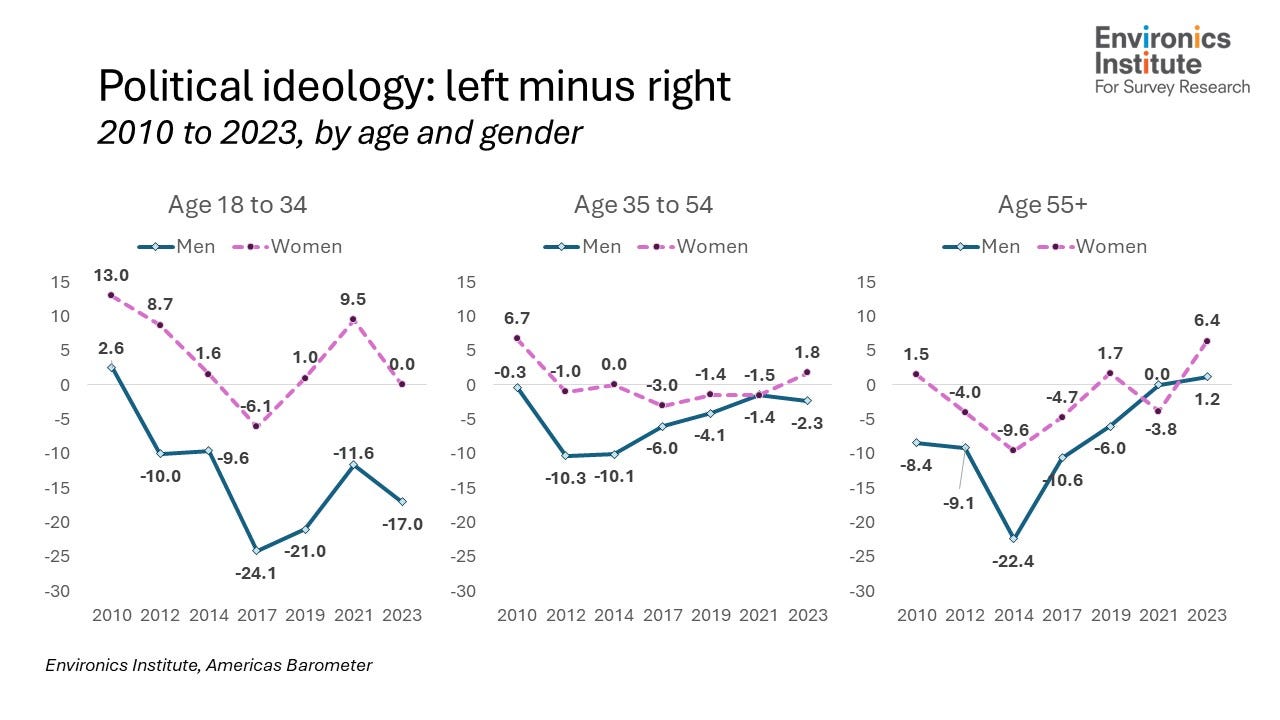
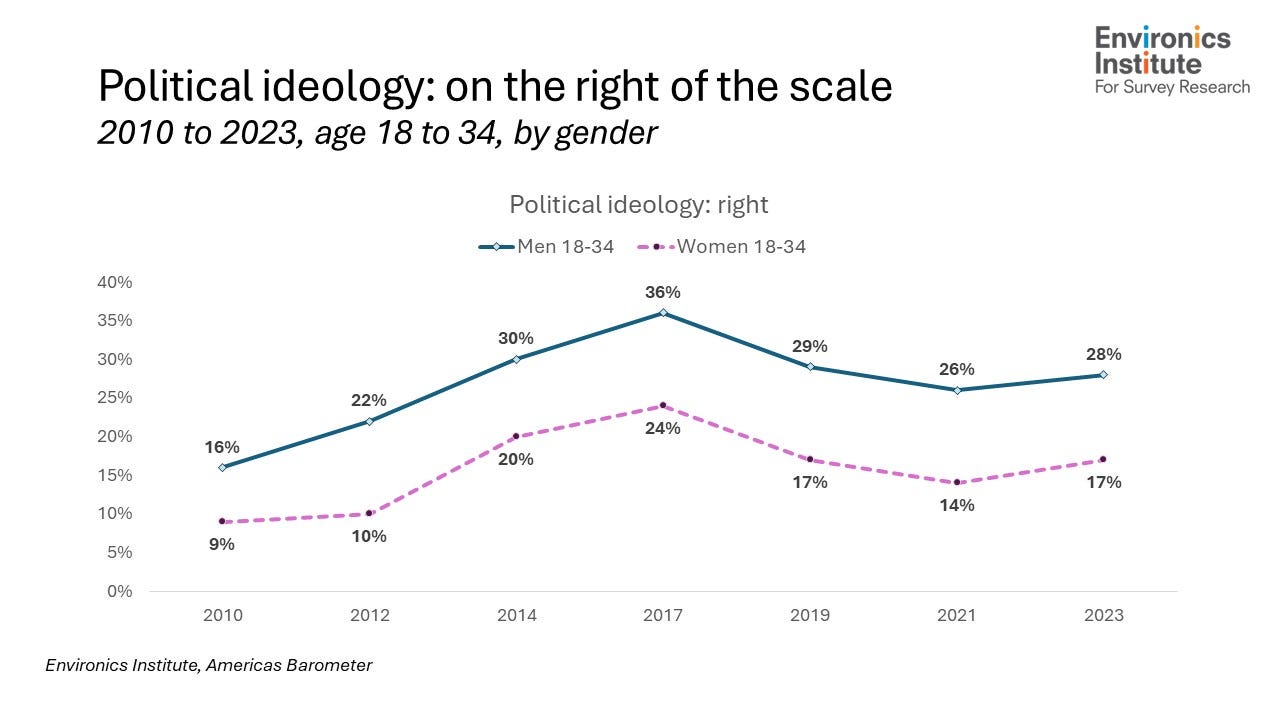
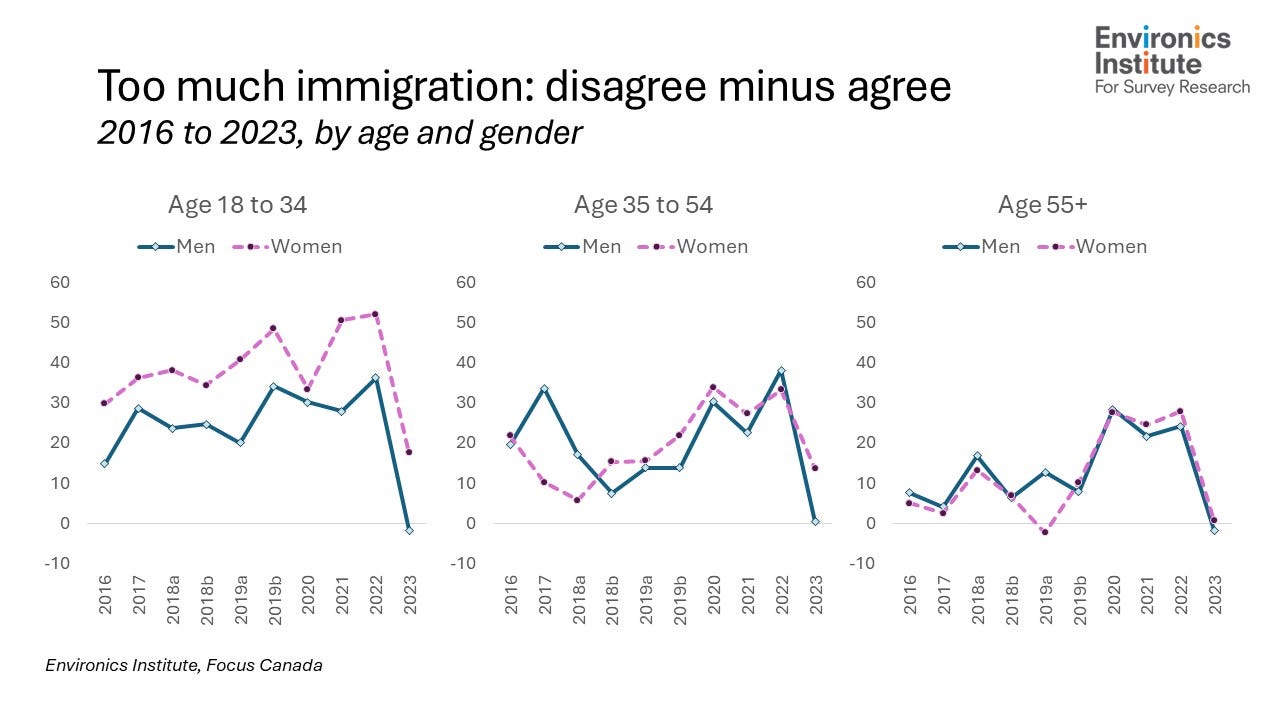
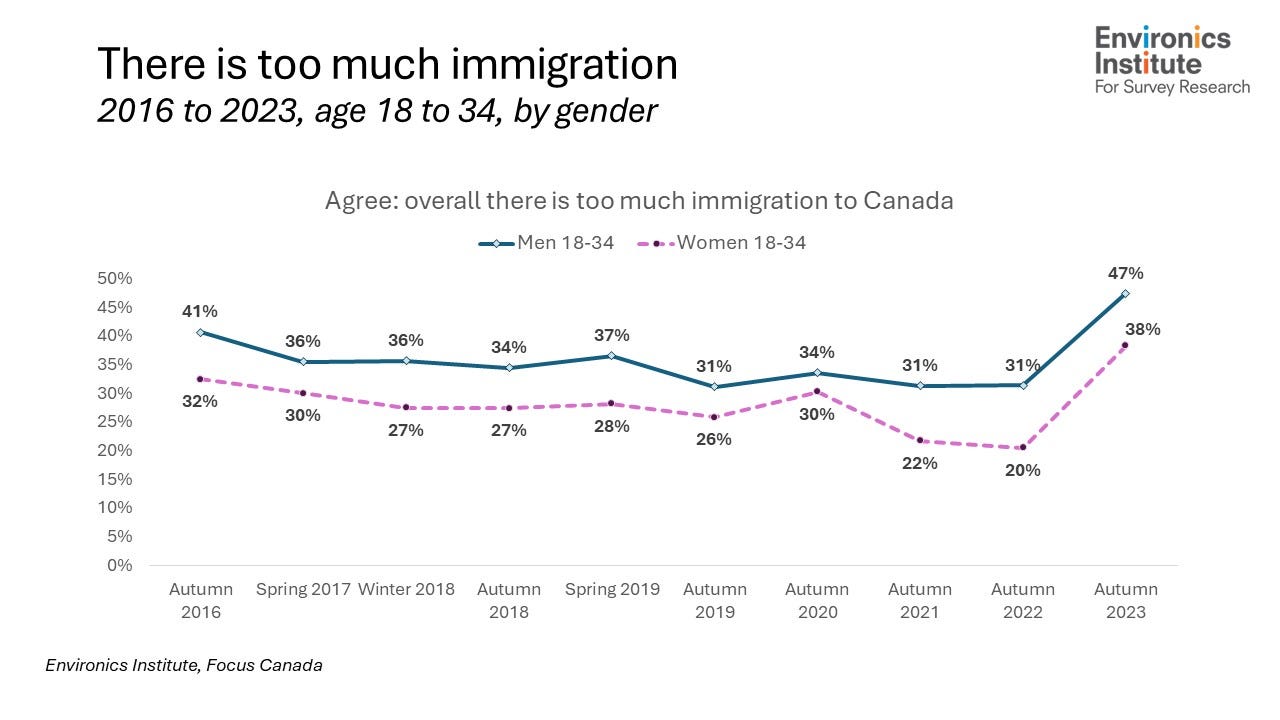
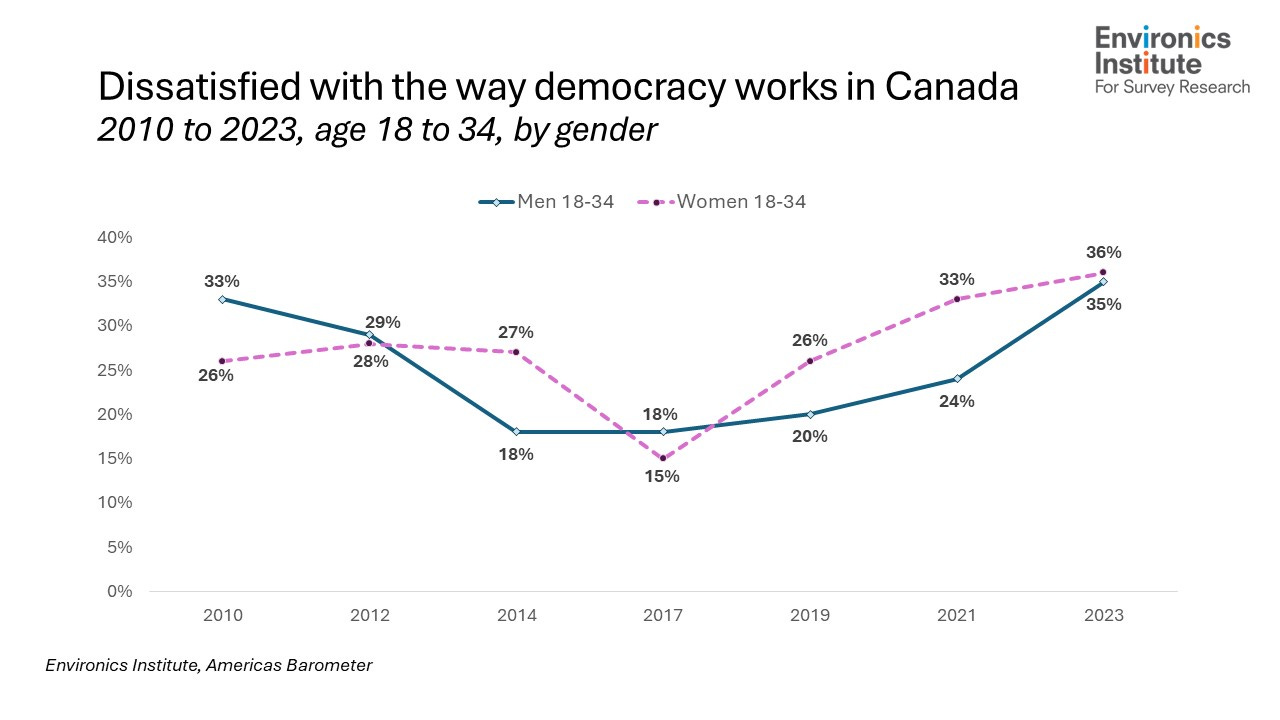
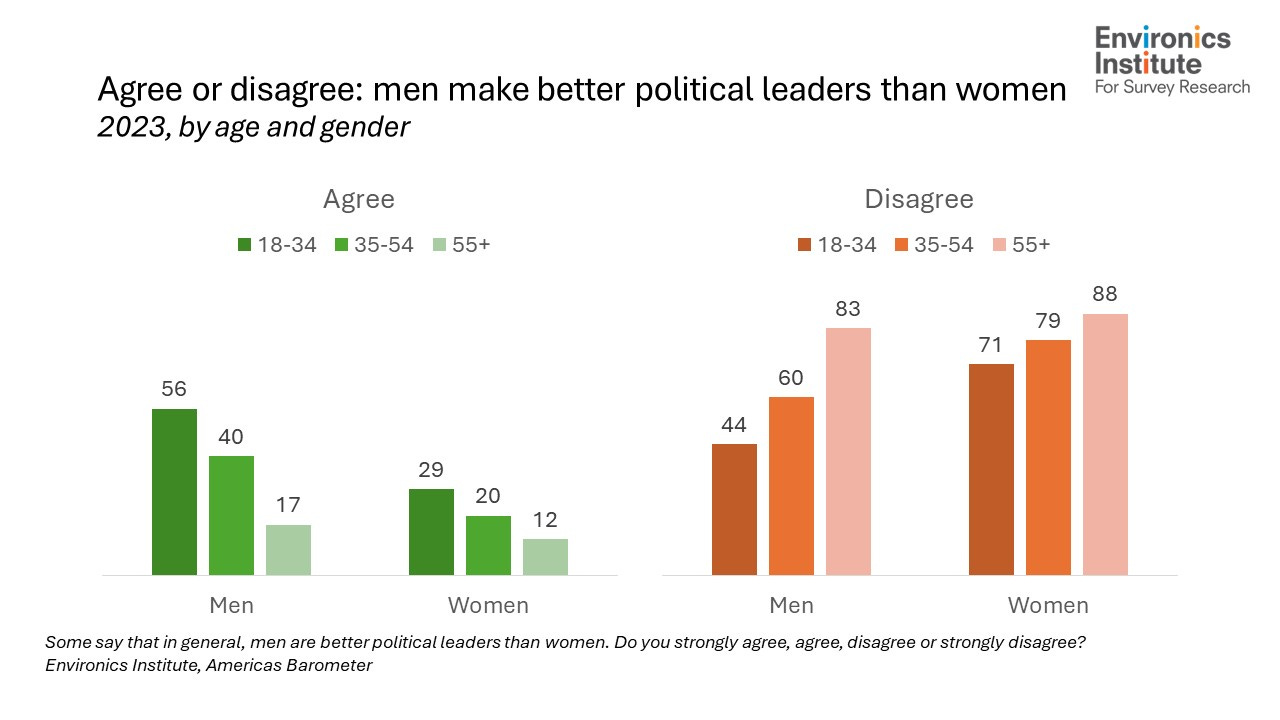
always interesting and relevant